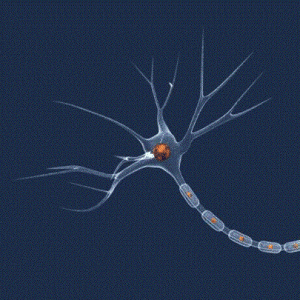Intel launches its next-generation neuromorphic processor—so, what’s that again?
Intel’s Loihi processors have electronics that behave a lot like neurons.
Despite their name, neural networks are only distantly related to the sorts of things you’d find in a brain. While their organization and the way they transfer data through layers of processing may share some rough similarities to networks of actual neurons, the data and the computations performed on it would look very familiar to a standard CPU.
But neural networks aren’t the only way that people have tried to take lessons from the nervous system. There’s a separate discipline called neuromorphic computing that’s based on approximating the behavior of individual neurons in hardware. In neuromorphic hardware, calculations are performed by lots of small units that communicate with each other through bursts of activity called spikes and adjust their behavior based on the spikes they receive from others.
On Thursday, Intel released the newest iteration of its neuromorphic hardware, called Loihi. The new release comes with the sorts of things you’d expect from Intel: a better processor and some basic computational enhancements. But it also comes with some fundamental hardware changes that will allow it to run entirely new classes of algorithms. And while Loihi remains a research-focused product for now, Intel is also releasing a compiler that it hopes will drive wider adoption.
From neurons to computation
The foundation of the nervous system is the cell type called a neuron. All neurons share a few common functional features. At one end of the cell are structures called a dendrites, which you can think of as receivers. This is where the neuron receives inputs from other cells. Nerve cells also have an axon, which act as a transmitter, connecting with other cells to pass along signals.
The signals take the form of what are called “spikes,” which are brief changes in the voltage across the neuron’s cell membrane. Spikes travel down axons until they reach the junctions with other cells (called synapses), at which point they’re converted to a chemical signal that travels to the nearby dendrite. This chemical signal opens up channels that allow ions to flow into the cell, starting a new spike on the receiving cell.
The receiving cell integrates a variety of information—how many spikes it has seen, whether any neurons are signaling that it should be quiet, how active it was in the past, etc.—and uses that to determine its own activity state. Once a threshold is crossed, it’ll trigger a spike down its own axons and potentially trigger activity in other cells.
Typically, this results in sporadic, randomly spaced spikes of activity when the neuron isn’t receiving much input. Once it starts receiving signals, however, it’ll switch to an active state and fire off a bunch of spikes in rapid succession.

How does this process encode and manipulate information? That’s an interesting and important question, and one we’re only just starting to answer.
One of the ways we’ve gone about answering it was via what has been called theoretical neurobiology (or computational neurobiology). This has involved attempts to build mathematical models that reflected the behavior of nervous systems and neurons in the hope that this would allow us to identify some underlying principles. Neural networks, which focused on the organizational principles of the nervous system, were one of the efforts that came out of this field. Spiking neural networks, which attempt to build up from the behavior of individual neurons, is another.
Spiking neural networks can be implemented in software on traditional processors. But it’s also possible to implement them through hardware, as Intel is doing with Loihi. The result is a processor very much unlike anything you’re likely to be familiar with.